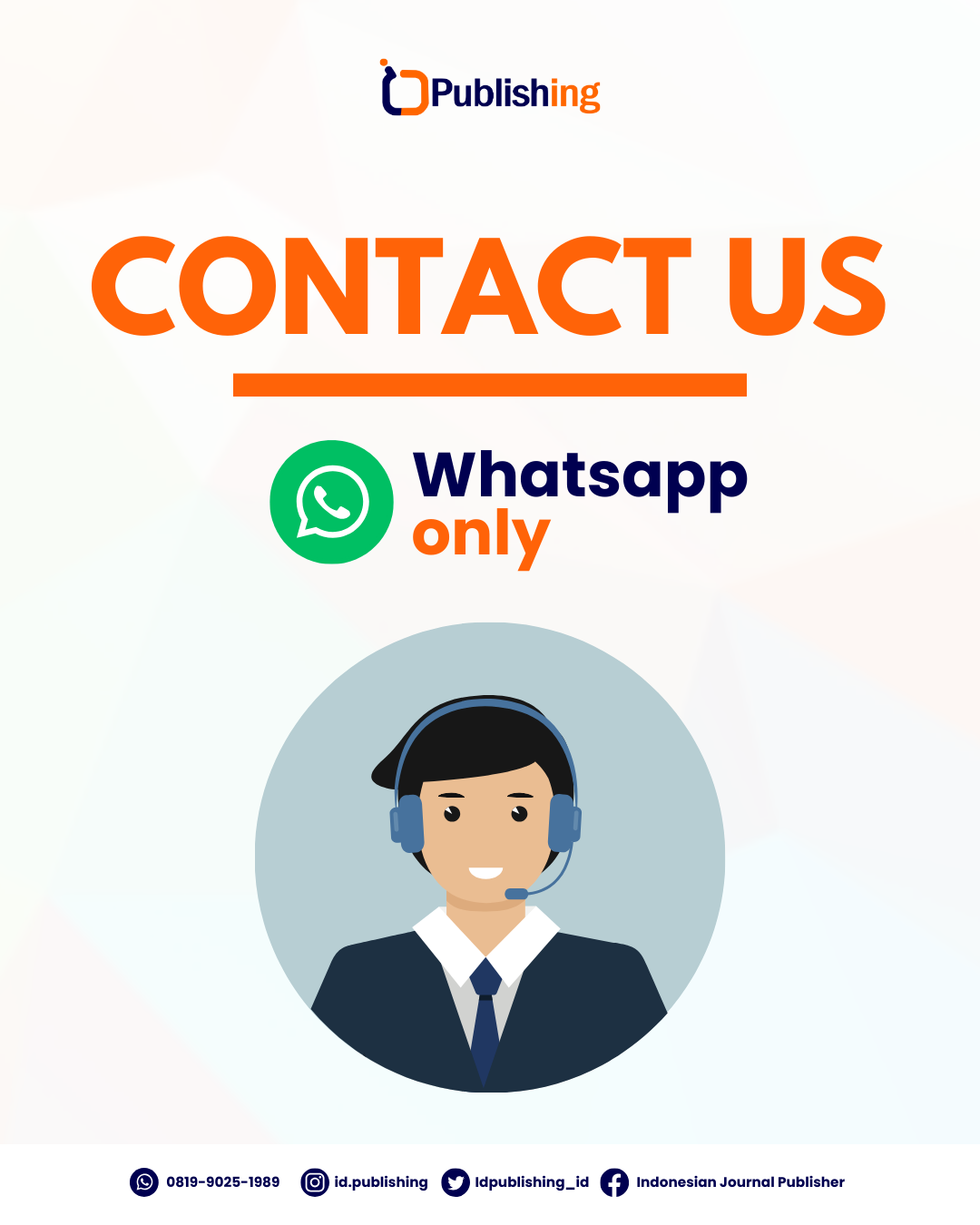Sintesis dan Karakterisasi Nanosilika dari Limbah Silica Scaling PLTP Dieng Melalui Metode Alkali Fusion NaOH
DOI:
https://doi.org/10.47134/jme.v1i1.2194Keywords:
Nanosilika,Silica Scaling, Alkali FusionAbstract
Silica scaling is the main problem that arises in the operation of geothermal power plants (PLTP) in Dieng. Silica scaling can disrupt electricity production and cause a buildup of waste in the environment. Silica scaling has a high silica (SiO2) content so it has the potential to be used as a value-added material, namely nanosilica. One method to obtain nanosilica is alkali fusion. This research aims to obtain nanosilica from silica scaling waste from PLTP Dieng using the alkali fusion method as well as knowing the characteristics of the nanosilica produced. The alkali fusion process is carried out using NaOH as an alkali source. Then mixing silica scaling powder and NaOH at varying temperatures of 600°C, 650°C and 700°C to produce nanosilica. The resulting nanosilica was then characterized to confirm the success of the synthesis process in producing nanosilica particles. The characterization carried out included x-ray diffraction (XRD) to characterize crystallinity, Fourier transform infrared (FTIR) to characterize functional groups, transmission electron microscope (TEM) and particle size analyzer (PSA) to determine particle size. The results of this research showed that amorphous nanosilica was successfully synthesized from silica scaling using the NaOH alkali fusion method. It was found from the results of TEM and PSA characterization that the smallest particle size was produced at a fusion temperature of 650°C. Furthermore, FTIR data also confirms the existence of functional groups at wave numbers identical to silica.
References
Adiatama, A. R., Susanti, R. F., Astuti, W., Petrus, H. T. B. M., & Wanta, K. C. (2022). Synthesis and Characteristic of Nanosilica From Geothermal Sludge: Effect of Surfactant. Metalurgi, 37(2), 73–86. https://doi.org/10.14203/METALURGI.V37I2.637 DOI: https://doi.org/10.14203/metalurgi.v37i2.637
Al-Oweini, R., & El-Rassy, H. (2009). Synthesis and characterization by FTIR spectroscopy of silica aerogels prepared using several Si(OR)4 and R′′Si(OR′)3 precursors. Journal of Molecular Structure, 919(1–3), 140–145. https://doi.org/10.1016/j.molstruc.2008.08.025 DOI: https://doi.org/10.1016/j.molstruc.2008.08.025
Allendorf, M. D., & Spear, K. E. (2001). Thermodynamic Analysis of Silica Refractory Corrosion in Glass-Melting Furnaces. Journal of The Electrochemical Society, 148(2), B59. https://doi.org/10.1149/1.1337603 DOI: https://doi.org/10.1149/1.1337603
Bao, N., Miao, X., Hu, X., Zhang, Q., Jie, X., & Zheng, X. (2017). Novel synthesis of plasmonic Ag/AgCl@TiO2 continues fibers with enhanced broadband photocatalytic performance. Catalysts, 7(4). https://doi.org/10.3390/catal7040117 DOI: https://doi.org/10.3390/catal7040117
Hamzah, M. S., Wildan, M. W., Kusmono, K., & Suharyadi, E. (2022). Synthesis of Silica Nanoparticles from Silica Sand via Vibration Assisted Alkaline Solution Method. International Journal of Engineering, Transactions A: Basics, 35(7), 1300–1306. https://doi.org/10.5829/ije.2022.35.07a.09 DOI: https://doi.org/10.5829/IJE.2022.35.07A.09
Hasri, Fauziah, & Negara, S. P. J. (2021). Sintesis Nanosilika Pasir Pantai Takalar Menggunakan Metode Hidrotermal. Sainsmat : Jurnal Ilmiah Ilmu Pengetahuan Alam, 10(2), 165. https://doi.org/10.35580/sainsmat102262212021 DOI: https://doi.org/10.35580/sainsmat102262212021
Jenie, S. N. A., Ghaisani, A., Ningrum, Y. P., Kristiani, A., Aulia, F., & Petrus, H. T. M. B. (2018). Preparation of silica nanoparticles from geothermal sludge via sol-gel method. AIP Conference Proceedings, 2026, 1–6. https://doi.org/10.1063/1.5064968 DOI: https://doi.org/10.1063/1.5064968
Munasir, Triwikantoro, Zainuri, M., & Darminto. (2013). Perbandingan Massa Kalium Hidroksida Pada Ekstraksi SiO2 Orde Nano Berbasis Bahan Alam Pasir Kuarsa. Prosiding Seminar Nasional Sains Dan Pendidikan VII UKSW. DOI: https://doi.org/10.26740/jpfa.v2n1.p20-29
Pambudi, N. A., Itoi, R., Yamashiro, R., Alam, B. Y. C. S., Tusara, L., Jalilinasrabady, S., & Khasani, J. (2015). The behavior of silica in geothermal brine from Dieng geothermal power plant, Indonesia. Geothermics, 54, 109–114. https://doi.org/10.1016/j.geothermics.2014.12.003 DOI: https://doi.org/10.1016/j.geothermics.2014.12.003
Pambudi, W., Sya’bani, M. W., Warmiati, & Ikhwan, M. (2022). Pengaruh Waktu Aging pada Sintesis Nano Particle Geothermal Silica (NPGS) Menggunakan Metode Sol-Presipitasi. Jurnal Teknologi, 10(1), 100–107. DOI: https://doi.org/10.31479/jtek.v10i1.199
Rahim, N. A., Harun, N. Y., Saeed, A. A. H., & Bilad, M. R. (2023). Green Route Synthesis of Amorphous Silica from Oil Palm Decanter Cake: From Literature Review to Experiments. Indonesian Journal of Science and Technology, 8(2), 141–156. https://doi.org/10.17509/ijost.v8i2.53724 DOI: https://doi.org/10.17509/ijost.v8i2.53724
Rahmawati, C., Aprilia, S., Saidi, T., Aulia, T. B., & Hadi, A. E. (2021). The effects of nanosilica on mechanical properties and fracture toughness of geopolymer cement. Polymers, 13(13). https://doi.org/10.3390/polym13132178 DOI: https://doi.org/10.3390/polym13132178
Schweigert, I. V., Lehtinen, K. E. J., Carrier, M. J., & Zachariah, M. R. (2002). Structure and properties of silica nanoclusters at high temperatures. Physical Review B - Condensed Matter and Materials Physics, 65(23), 2354101–2354109. https://doi.org/10.1103/PhysRevB.65.235410 DOI: https://doi.org/10.1103/PhysRevB.65.235410
Silviana, Hasbi, R. M., Sagita, C. P., Nurhayati, O. D., Fauzan, A., Suhartana, & Hatmoko, J. U. D. (2017). Silika Alam dari Limbah Padata Pengeboran Geotermal di Dieng Sebagai Silika Gel Melalui Proses Ramah Lingkungan. Seminar Nasional Teknologi Industri Hijau 2, 341–346.
Singh, P., Srivastava, S., & Singh, S. K. (2019). Nanosilica: Recent Progress in Synthesis, Functionalization, Biocompatibility, and Biomedical Applications [Review-article]. ACS Biomaterials Science and Engineering, 5(10), 4882–4898. https://doi.org/10.1021/acsbiomaterials.9b00464 DOI: https://doi.org/10.1021/acsbiomaterials.9b00464
Sudhakaran, G., & Avirah, S. A. (2022). Studies on reinforcing effect of industrial nano silica in chloroprene vulcanizates containing carboxy-terminated liquid natural rubber. Journal of Elastomers and Plastics, 54(3), 509–517. https://doi.org/10.1177/00952443211063597 DOI: https://doi.org/10.1177/00952443211063597
Suryadi, J., Sulaeman, S. A., Yulianthina, S., Paramitha, T., & Andrijanto, E. (2023). Karakter Ikatan Kimia, Kristalinitas, dan Ukuran Partikel Produk Silika yang Disintesis dari Bahan Limbah Padat Geotermal. JC-T (Journal Cis-Trans): Jurnal Kimia Dan Terapannya, 7(1), 10–15. https://doi.org/10.17977/um0260v7i12023p010 DOI: https://doi.org/10.17977/um0260v7i12023p010
Utami, W. S., Herdianita, N., & Atmaja, R. (2014). The Effect of Temperature and pH on the Formation of Silica Scaling of Dieng Geothermal Field, Central Java, Indonesia. Thirty-Ninth Workshop on Geothermal Reservoir Engineering.
Wahyudi, A., Dessy, A., & Sariman. (2013). Preparation of Nano Silica from Silica Sand Through Alkali Fusion. Indonesian Mining Journal, 16(3), 149–153.
Wahyudityo, R., Harto, A. W., & Suryopratomo, K. (2013). Analisis Scaling Silika pada Pipa Injeksi Brine di Lapangan Panas Bumi Dieng dengan Studi Kasus di PT. Geo Dipa Energi. Teknofisika, 2(1), 7–14.
Downloads
Published
How to Cite
Issue
Section
License
Copyright (c) 2024 Journal of Mechanical Engineering

This work is licensed under a Creative Commons Attribution 4.0 International License.










